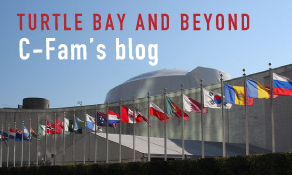NEW YORK, August 25 (C-Fam) The real threat of the new World Health Organization pandemic treaty is not just legal, it is above all bureaucratic.
The point of the new treaty is not so much to give the WHO total control of national policy, as for national bureaucracies to be snagged into arcane bureaucratic requirements that will make it difficult for countries to decide the best course of action during future pandemics.
Politicians, international officials, and the mainstream media collectively shrugged when people all around the world raised the alarm about the new pandemic treaty earlier this year. The mainstream media went along.
A widely circulated Fact Check by the Associated Press, for example, denied that the treaty would be used to censor free speech, impose lockdowns, or limit civil liberties. Citing a World Health Organization official, the AP article said it was a “conspiracy theory” that the treaty could be used to intrude in national policy space.
All these abuses took place during the COVID-19 pandemic without a treaty, by the very same national and international officials who are now secretly negotiating the pandemic treaty. The Biden administration and China made secrecy a condition of the pandemic treaty negotiations. These same bureaucrats, who wanted increased power and money during the COVID-19 emergency, want us to blindly accept that these abuses will never happen again.
Similar abuses seen during COVID-19 are very much at stake in the new treaty and many more still.
The initial text of the draft treaty released for the public this Summer does not contain specific legal prescriptions related to censorship, lockdowns, or limits to national policy space. It contains many caveats apparently defending national prerogatives and, like most international treaties, its language is generally broad and vague from a legal standpoint. Nonetheless, the treaty text is replete with new legally binding international bureaucratic mechanisms and mandates for such abuses to eventually take place.
Moreover, the treaty requires international cooperation and national action to address the “social, environmental, and economic determinants of health” even during non-pandemic times. Regardless of caveats, the treaty imposes an obligation on countries to “consider and endeavor to implement” any recommendations prepared by the international bureaucratic and monitoring processes set up by the treaty.
The bureaucratic mechanisms that the treaty establishes would not only give the WHO a greater say in domestic policy decisions, they would tie up national health systems to the processes and mechanisms required by the treaty in the case of a pandemic emergency. Chief of these will be the authority, vested in the Secretary General of the WHO, to declare a pandemic emergency and to thereby trigger the binding bureaucratic processes in the treaty.
Indeed, this is likely the main objectives of the pandemic treaty, to make it harder for governments to decide how to handle a pandemic on their own terms, just like U.S. presidential candidates Trump and Florida Governor Ron de Santis did during COVID-19. No one seriously expects that the pandemic treaty could ever convince China to act differently than it did during COVID-19, but it could prevent the U.S. and other Western countries from acting on their own in the future.
Countries will continue to negotiate the draft circulated in June over the next two months until December. A final text for adoption is expected in May 2024. With the backing of the Biden administration, the European Union, and other Western countries it has a high chance of succeeding.
View online at: https://c-fam.org/friday_fax/analysis-the-bureaucratic-threat-of-a-new-pandemic-treaty/
© 2025 C-Fam (Center for Family & Human Rights).
Permission granted for unlimited use. Credit required.
www.c-fam.org









